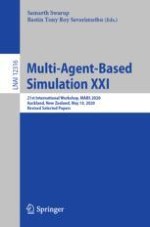This book constitutes the thoroughly refereed post-conference proceedings of the 20th International Workshop on Multi-Agent-Based Simulation, MABS 2020, held in Auckland, New Zealand, in May 2020 collocated with 19th International Conference on Autonomous Agents and Multi-Agent Systems (AAMAS 2020). Due to COVID-19 the workshop has been held online.
The 9 revised full papers included in this volume were carefully selected from 11 submissions. The workshop focused on finding efficient solutions to model complex social systems, in such areas as economics, management, organizational and social sciences in general and much more.
